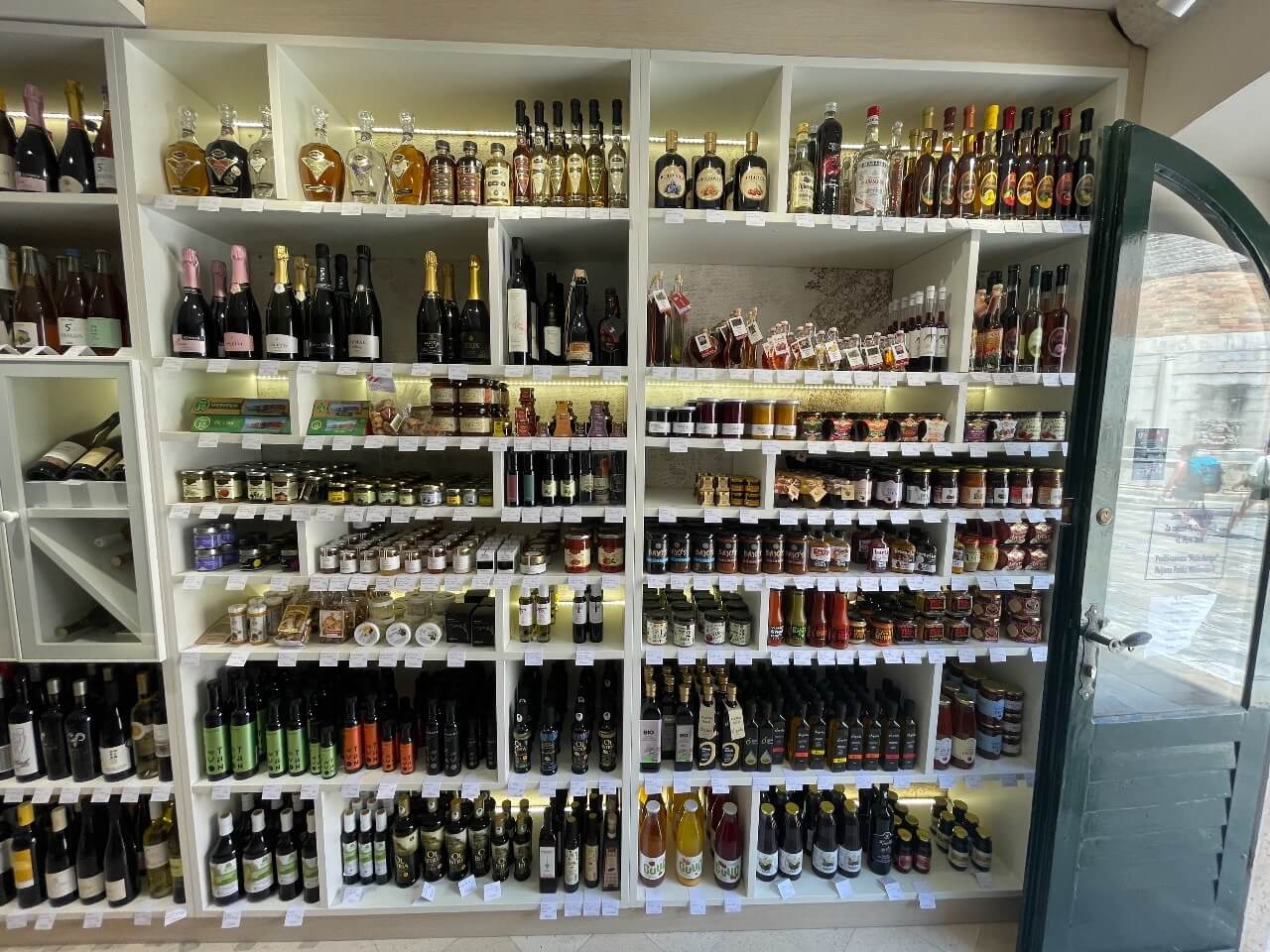How to Croatia - All You Need to Know About Croatian Tourist Visas
May the 10th, 2023 - What with Schengen, the EU and beyond, questions have once again arisen about the different Croatian tourist visas the country issues. ETIAS, which isn't a visa but a travel authorisation, is also due to come in next year. Let's delve a bit deeper.
ETIAS
First and foremost, as I mentioned above, an ETIAS isn't a Croatian tourist visa, it's merely a travel authorisation and the plan is for it to become operational in 2024. ETIAS approval is not the same as having a residence permit in an EU country, it is intended for short stays of 90 days or less in any 180 days only.
Nationals of the following non-EU countries (over 60 nations) who do not require visas to enter the EU will be required to obtain an ETIAS for short-term stays in the EU. This doesn't include legal residents of Croatia (who can evidence their rights with a residence permit). They will not require an ETIAS. An ETIAS will cost seven euros and be valid for multiple entries into the EU for a period of three years, or until the travel document registered to it expires, if that's sooner. In some cases, it will be free.
30 European countries will require visa-exempt nationals to have an ETIAS to enter. You can find out much more detailed information on ETIAS plans here.
Who doesn't need a visa?
Citizens of European Union or European Economic Area countries do not require a visa to enter or stay in Croatia for a period of ninety days in any 180 days.
Legal residents of Croatia, regardless of their nationality, do not require a visa to enter or stay in Croatia. Those who hold temporary residence permits are free to stay in the country for as long as their residence permit remains valid. Those who hold permanent Croatian residence can enter and remain in Croatia indefinitely and without any conditions.
It's worth noting that there are some third-country nationals (people who do not hold the citizenship of an EU/EEA country) who can enter Croatia without a visa.
Who does need a visa?
The list of countries whose citizens do require Croatian tourist visas is extensive, so instead of listing them all individually here, I'll provide a link to a government source (from the Ministry of Foreign and European Affairs). You can also do a quick check for yourself and your own citizenship/Croatian entry requirements using Wikipedia.
What types of Croatian tourist visas are issued?
Croatia issues multiple Croatian tourist visas, these are the A visa and the C visa (both of which are short-term stay Schengen visas), and the D visa, which is a Croatian national visa, issued for people on a long-term stay in the country. I'll break down the ins and outs below:
A visa
The A visa (Croatian: Viza A/zrakoplovno tranzitna viza) is an air transit visa which facilitates either single or multiple passages through international transit areas of a Croatian airport. It remains valid from its date of issue for a period of no longer than six months (+ fifteen days).
C visa
The C visa (Croatian: Viza C/kratkotrajna viza) is a short-term stay Schengen visa issued to third-country nationals (individuals who do not hold the citizenship of an EEA member state and who require a visa) and facilitates their entry and stay in Croatia or in any other Schengen member state for a period not exceeding ninety days in any 180 day period.
What makes the C visa a little bit more interesting is the fact that it can be issued for either a single entry or for multiple entries into Croatia and for various purposes. Another interesting bit of information about the C visa is that despite the fact that it is classed as a short-term stay visa, it can remain valid for up to five years depending on your purpose of travel. These purposes are as follows:
Business
Personal stay
Transit
Tourist stay
Other types of stay
D visa
The D visa (Croatian: Viza D/dugotrajna viza), is a long-term national visa (nacionalna viza) which allows a third-country national to stay in Croatia for up to thirty days if they have already been granted temporary stay for the purposes referred to in the Croatian Law on Foreigners (zakon o strancima), or if they've already been issued with a stay and work permit, and if they are required to hold a short-stay visa in order to legally enter Croatia. Much more detailed information on the D visa can be found here.
How do I apply for a Croatian tourist visa?
Those who require visas to enter and stay in Croatia, or indeed to transit through it, must make their visa applications before entering the country.
In person
You can apply at a Croatian consulate or embassy in your country. A list of all Croatian embassies/consular posts abroad can be found here.
The rule of thumb is not to make your visa application any sooner than six months before your planned date of travel to Croatia, and no later than fifteen days before it. The general timeframe required for the authorities to give your visa application the green light (assuming all is as it should be) is fifteen days.
Online
You can apply for a Croatian tourist visa here, and find out all of the ins and outs pertaining to your particular nationality and reason for entering Croatia here. Both of these links are to official sources (the Ministry of Foreign and European Affairs and the Interior Ministry), they will also detail the documents you need to apply for a Croatian tourist visa, as well as any associated fees.
An extensive list of travel documents issued by the governments of third countries and which are accepted by Croatian border officers can be found here, and the Croatian tourist visa application forms themselves are offered in the following languages:
Croatian
Ukrainian
Turkish
Arabic
English
Russian
Spanish
Portuguese
French
Chinese
German
Albanian
At the Croatian border in exceptional and justified circumstances
I want to preface this by saying please don't ever do this unless it is for absolutely justified reasons that you can easily prove. It just isn't worth the hassle and the border officer can simply refuse you entry if you don't have a decent reason (such as serious unforeseen, urgent circumstances) and all of the required documentation.
If you obtain a Croatian tourist visa this way, you are severely restricted in what it serves for. It will facilitate only transit or one single entry of up to fifteen days at most.
You can find a list of all of the required documentation here, as well as which Croatian borders offer this possibility as an entry option (it's very important to note that not all of them do).
How do I calculate my time spent in the Schengen zone?
If you require a Schengen visa in order to enter and spend ninety days in any 180 days in Croatia or the rest of the Schengen zone, you'll need to make sure you're accurately calculating your days. A handy calculator can be accessed by clicking here.
For more on moving to, living in and travelling to and from Croatia, make sure to keep up with our dedicated lifestyle section. An article tackling anything from a specific administrative issue to tips on renting a car or bringing your pet into the country is published every Wednesday as part of our How to Croatia series.
From the UK to BiH, Which European Countries Do Croats Travel to Most?
April the 26th, 2023 - When it comes to where Croats travel abroad, it tends to be to other European countries, and in all honesty - Croatian citizens don't really travel outside of the country that much when compared to other Europeans. Let's see where they do like to go.
As Poslovni Dnevnik writes, last year, foreign income from tourism exceeded that of the record pre-pandemic year of 2019, and expenditures for foreign trips also increased significantly. How much and where did Croats travel last year, and what is the balance of the exchange of tourist services?
The Croatian National Bank (CNB/HNB) has published the statistics on the exchange of tourist services in 2022, as reported by tportal. The data confirms the full recovery of tourist trips after several pandemic-dominated years. Revenues from foreign tourists reached a massive 13.1 billion euros, which is 44 percent more than in 2021 and 24 percent more than the record tourism year of 2019.
A strong recovery was also recorded in tourism consumption by Croats travelling abroad. Last year, Croats spent 1.39 billion euros on tourist trips outside of the Republic of Croatia, which is 47.9 percent more than was spent back in 2021. However, the spending of Croatian tourists abroad still didn't reach the record from 2019, when 1.57 billion euros were spent.
Compared to other European nations, Croats don't really tend to travel to foreign destinations. According to data from the Central Bureau of Statistics (CBS) from back in 2021, out of 6.3 million private multi-day trips, as many as 85.4 percent or 5.4 million were realised within Croatia itself, and only 981 thousand (15.5 percent) were realised abroad.
At the same time, it should be emphasised that during foreign trips, visits to relatives and friends prevail, and only a small part refers to the classic type of tourist trips, which include rest, leisure, tours and visits to various types of foreign events.
The main foreign destinations testify to the tourist habits of the inhabitants of this country and where Croats travel abroad. Croats visit countries in the surrounding area the most, with trips to neighbouring Bosnia and Herzegovina leading the way, where almost a third of tourist spending abroad was realised for various purposes. Among the top five destinations are neighbouring Slovenia and Serbia, as well as Germany. If we're heading outside of Europe, then we can also include the USA, where a lot of the Croatian diaspora and new Croatian emigrants now live.
The European country that most attracts Croats with its tourist attractions is the United Kingdom of Great Britain and Northern Ireland, and Portugal has also recorded the greatest growth in arrivals and spending by Croatian tourists over more recent years. It's interesting to note that the tourist meccas of Italy and France are not among the leading tourist destinations for travellers from Croatia. Croats spent only 13.9 million euros on tourist trips to Italy, and even less, 13.4 million euros, on visits to France.
On the other hand, Croatia is a real superpower in terms of attracting foreign tourists, and that isn't really a shock to anyone who hasn't been living under a rock for decades now. German tourists alone spent 3.52 billion euros in Croatia last year, which is almost three times more than Croats spent in total on all of their foreign trips.
In addition to the Germans, more than one billion euros were spent in Croatia last year by tourists from Slovenia, Austria and Italy, countries for which Croatia is traditionally a favourite tourist destination.
Foreign revenues from all leading Croatian broadcasting markets also exceeded revenues from the pre-pandemic year of 2019. At the same time, the markets of Great Britain (154.1 percent) and Bosnia and Herzegovina (50.7 percent) recorded the greatest relative growth compared to last year.
When looking at the relationship of tourist exchange with individual countries, only with Bosnia and Herzegovina does Croatia have a somewhat balanced exchange, while with all other tourism partners, huge surpluses have been recorded.
For more, check out our news section.
Schengen Croatia Welcomes 2023 by Lifting the EU Ramp One Last Time
January 1, 2023 - At midnight, Schengen Croatia marked its entry into the Schengen area with the symbolic removal of the plaque at the Bregana border crossing, the lifting of the ramp, and the green light for free passage at the site of the former border control, which is now going down in history. "We opened the door to a Europe without borders," said Minister of the Interior Davor Božinović in Bregana. "Tonight, he added, we celebrate a new day, a new year, a new Europe with Croatia in Schengen."
As Index writes, at the beginning of 2023, Croatia became a new member of the Schengen zone, the largest area of free movement of goods and people in the world, which includes all the members of the European Union, except for Bulgaria and Romania, Cyprus, the Republic of Ireland and four other non-EU countries: Switzerland, Iceland, Liechtenstein, and Norway.
On this occasion, on New Year's Eve, special ceremonies were held at numerous border crossings with Slovenia and Hungary, including one of the largest crossings on the Croatian-Slovenian border, Bregana-Obrežje.
Borders have stood there for too long
Minister Božinović hosted Slovenian Minister Sanja Ajanović Hovnik, while Acting Chief Director of Slovenian Police Boštjan Lindav joined Chief Police Director Nikola Milina.
"There are no more borders that stood between our neighbors and us for too long, the natural environment to which we belong both as a people and as a country," Božinović said.
He assessed that last night's act is more than the abolition of border controls: It is the final affirmation of our European identity, for which generations of Croats fought and ultimately won. He thanked the Slovenian minister and delegation for sharing moments of joy and pride. "Happy new year in Schengen to all of you!"
The Slovenian minister considered it a historical event. "Just as we symbolically set borders about 30 years ago, we are removing them now. However, this does not mean that security will decrease since we have thoroughly prepared for this moment in both countries," said Ajanović Hovnik.
After a short meeting of the ministers, at midnight, a ramp was simultaneously lifted on both sides of the border, which enabled free passage between the neighbouring countries. The lifting of the ramp on the Slovenian side was followed via a video wall.
Five minutes before midnight, the police officers at Bregana carried out the last border control, along with an appropriate gift - a teddy bear dressed in the uniform of a Croatian policeman.
In addition to the ramp, the sign with the inscription "Bergana Border Police Station" was removed, but just before that, the last report of the station chief was recorded, in which he informed the police officers to stop implementing border controls and move on to the tasks of compensatory measures.
The two countries' delegations then headed to the Slovenian side, to the area of the former Obrežje border crossing, where the chiefs of police stations and police officers thanked each other for their cooperation so far, with the symbolic removal of plaques from the police building in Obrežje. In the first 15 minutes after midnight, a dozen cars entered Slovenia without control from Croatia, greeting the assembled police officers with the sound of their horns.
For more, make sure to check out our dedicated Travel section.
200 New Fast Electric Vehicle Charging Stations in Croatia by 2030
November 3, 2022 - According to Hrvoje Prpić of Strujni Krug, by 2030, Croatia must have enough electric vehicle charging stations as if 5% of the total 'fleet' was fully electric.
As Poslovni writes, the European Alternative Fuels Infrastructure Regulation (AFIR) has reached a new level that will have significant effects on Croatia as well after the Committee for Transport and Tourism of the European Parliament adopted the regulation proposal for consideration, which is now going to the EU Parliament and the EU Council.
The new regulation established the so-called nationally binding goals that will prescribe how many European Union member states must set up electricity or hydrogen filling stations for light and heavy vehicles and also insists on the unification of payments via bank credit cards.
For example, for member states such as Croatia, which have less than 1% share of electric vehicles in the total fleet of vehicles, it is determined that by 2025 they must install charging stations with a power equivalent of 3kW for each fully electric vehicle and 2kW for each plug-in hybrid vehicle. According to the current situation, Croatia would have to install chargers with a total power of 11,524 kW.
Personal and light delivery vehicles
As explained by Hrvoje Prpić, the president of the Association of Electric Vehicle Drivers - Strujni Krug, Croatia will need to install 100-200 fast charging stations for electric vehicles by 2025, depending on their power, to fulfill this condition.
He adds that by 2027, the infrastructure of charging stations across the country will have to provide the same power as if 3% of the total fleet were fully electric. By 2030, the number of stations will have to increase as if 5% of the total fleet were fully electric. Thus, by 2027, and according to the current situation and the number of the current fleet, Croatia will have to install charging stations with a total power of over 70,000 kW, and by 2030 with a total power of more than 119,000 kW.
"If, for example, ultra-fast charging stations with a power of 150 kW are to be installed, which can charge an average vehicle in 10-25 minutes, Croatia will have to install around 470 such charging stations by 2027, and almost 800 by 2030," says Prpić. There are currently around 2.8 million motor vehicles registered in Croatia, of which 2.2 million are passenger cars. The number of electric vehicles is around 2,000.
The AFIR would set goals for the significant strengthening of the infrastructure on the TEN-T corridor, which connects all the main traffic points in Europe. This means that the number of charging stations for light and heavy electric vehicles on the routes Ljubljana - Zagreb, and Varaždin - Rijeka would be further increased.
For electric passenger and light delivery vehicles, the regulation aims to ensure complete coverage of charging stations along the leading EU network and thus ensure easy travel by electric vehicles throughout the Union.
The goal is that by 2025 there will be a station every 60 km with charging stations with a total power of at least 600 kW and at least one charging station of 300 kW. By 2030, the mentioned charging stations at the stops should be upgraded to 900 kW, and at least two charging stations should have a power of 350 kW.
Upgrading the rest stops
On the other hand, AFIR requires that, by 2025, for heavy delivery and passenger vehicles on the TEN-T corridor, charging stations with a minimum power of 2000 kW must be installed every 60 km, of which at least two will have a power of 800 kW. By 2030, these stations should be upgraded with charging stations with a total power of 5,000 kW, of which at least four will have a capacity of 800 kW.
Additionally, on all roads connected to the TEN-T corridor, member states must provide a network of charging stations every 100 km by 2025, which will have a total power of 2000 kW and at least one charging station with a capacity of 800 kW. By 2035, the charging stations will have to be upgraded to a total power of 5000 kW with at least two charging stations with a capacity of 800 kW.
Additionally, each urban junction on the mentioned roads will have to have a minimum of 1400 kW of power by the end of 2025, which will be distributed to four 350 kW charging stations, and by 2030 the total capacity will have to increase to 3500 kW.
Additional rest areas/parking lots will have to provide at least two charging stations with a minimum power of 100 kW with V2G technology by 2027 or at least four such charging stations by 2030.
For more, make sure to check out our dedicated Travel section.
Waterfalls, Cheese and TV Shows - How Do Foreigners Recognise Croatia?
September the 12th, 2022 - Just what is it that makes Croatia so recognisable to foreign visitors? From Game of Thrones to waterfalls and Christmas events, the list is varied.
As Morski writes, the well known travel blog Travel Drafts Croatia has stated that ''Croatia is a beautiful country in the Western Balkans, which is actually a part of the former Yugoslavia... Although it is a very popular destination among newlyweds, families with children and backpack tourists, this country has recently experienced a small renaissance".
Game of Thrones
One of the most watched series ever to be produced used the Croatian city of Dubrovnik as King's Landing, the fictional capital of the seven kingdoms in the series. Because of this, among other things, word spread about how beautiful this city is. Tourists flock there to see where Cersei had her Walk of Shame, and to tour the sets of the hit series.
The blog then goes on to state that would-be visitord should know that the city is full of tourists during the hot summer months and is much easier to explore during the off-season.
Beautiful waterfalls
Krka National Park is home to the most famous waterfall in all of Croatia, known as Skradinski buk. Plitvice Lakes are also home to numerous beautiful waterfalls. Although they are not so well known individually, this is one of the ten world heritage sites located in Croatia which is under UNESCO protection and one of two natural sites under UNESCO protection.
Red tourism (so-called)
Red tourism is travel to communist, socialist or ex-communist/socialist countries, usually by people originating from non-communist/socialist countries to learn about the heritage of those forms of government. Tours of communist monuments are a great way to learn about what life was like in Yugoslavia. The blog recommends people to start with the Podgaric monument, which is one of the most striking examples of all of this form of ex-Yugoslav public art.
Even traditionally beautiful places like Dubrovnik offer opportunities for people seeking red tourism. Here, you can tour the Red History Museum, which is the first interactive museum in all of the Republic of Croatia dedicated to educating visitors about what life was like during communism.
The World Cup and football
Croatia made it all the way to the finals of the 2018 World Cup. Although they ended up losing to France, they were the pride of Europe and showed the world exactly how outstanding and passionate Croatia is when it comes to the most popular sport in the world. The blog notes that the footballing tradition in Croatia is strong, explaining how the country has actually competed in the World Cup five times as an independent nation. Croatia had its very first performance back in 1998, when it came third! Of course, before that, the Croats competed in the larger Yugoslav team.
Beautiful islands
The Greek islands may be more famous, but the Croatian Adriatic islands are just as (if not more) beautiful. From Pag to Hvar, each one is a small perfect gem located in the middle of the Adriatic Sea. One of the most popular ways to experience the Croatian islands is to go on a sailing adventure and visit the most beautiful islands in the country/ Different islands have different reputations. There are islands known for their nightlife and parties, while others are known as real family-oriented places. Others have a more romantic atmosphere.
There are over one thousand two hundred islands dotted along the Croatian mainland, and almost fifty of them are inhabited. The blog tells its readers to be sure to do their research beforehand and choose the right island (or combination of islands) to suit the type of trip they might want to take.
Ancient Roman ruins
The blog says that if its readers enjoy visiting ancient Roman ruins, then they'll absolutely love visiting Croatia. In Split, you'll very easily find the Diocletian's Palace which is on the UNESCO World Heritage List. Diocletian, one of the most famous Eastern Roman emperors, ruled from the year 284 to the year 305. Back during that time, his palace was built in the very heart of the City of Split (Spalato), which was his main residence. Other important historical landmarks in Split that are part of this UNESCO World Heritage List include churches from the twelfth century and palaces from the fifteenth century.
The cravat
Considered an original Croatian product, it spread throughout Europe during the seventeenth century thanks to Croatian soldiers serving in the Thirty Years' War, where it became a recognisable fashion detail. The French were among the first to adopt it, and it entered their language under the name cravate, and later also in other European languages under similar names. Croatian ties, or cravats, are slightly wider than modern ties and are an extremely popular Croatian souvenir, especially in Zagreb, the country's charming capital.
Croatian honey
The Balkans is a region famous for homemade honey. While all countries in the region produce honey and claim that theirs is the best, you really don't want to miss trying it in Croatia. Or buying it as a souvenir.
Christmas markets
While many people think of Croatia as a summer destination, it is actually a fantastic place to go in the winter too! The Zagreb Christmas Market has been awarded the title of "Best European Christmas Market" for three years in a row. The people of Zagreb really turn their city into a winter wonderland, with an ice rink, amazing lights, traditional food and drink, and festive shows.
While Zagreb gets the most attention, Dubrovnik and Split also have great Christmas markets that are worth seeing, the blog adds.
Pag cheese
This hard cheese with an extremely distinctive and strong taste comes from the island of Pag and is made from sheep's milk. It is considered the most famous specialised cheese in all of Croatia, and can be found in many markets outside the country.
Lavender fields
The blog lets its readers know that the most famous lavender fields are located on the stunning Central Dalmatian island of Hvar. This island has been growing lavender for centuries, and during the months of July and August the fields become beautiful, and the air is permeated with the distinct smell of lavender.
''Croatia is an absolutely amazing country and I strongly encourage you to plan your own Croatian adventure! The top five destinations that you should not miss are Dubrovnik, Split, Plitvice Lakes, Zagreb and the island of Hvar. However, Rijeka is currently famous for its role as the European capital of culture, so you should put it on your itinerary for Croatia,'' Travel Drafts tells its readers.
For more, make sure to check out our dedicated travel section.
Croatian Residents Spent 8 Billion Kuna on Travel in 2021
July the 12th, 2022 - Croatian residents spent eight billion kuna on travel and trips back during 2021, despite the continuing issues posed by the global coronavirus pandemic during that time.
As Morski writes, back in 2021, 1.35 million Croatian residents or 39.4 percent of them travelled on multi-day trips around the country and also abroad, achieving 25 million overnight stays or 28 percent more than was recorded back in 2020, while spending slightly more than 8 billion kuna, or 51 percent more, and most of the travel and spending was done here in Croatia.
In total, in 2021, Croatian residents aged 15 and over made almost 4 million multi-day trips of three or more nights, which is an encouraging 30.4 percent increase compared to pandemic-dominated 2020.
Most of their trips, more precisely 3.5 million of them, were private in nature, which marked a 27.5 percent increase compared to 2020, and at the same time, they achieved 23 million overnight stays, or 24 percent more. 6.6 billion kuna was spent on these sorts of trips back in 2020, and when it comes to the spending done on these private trips last year, that figure was exceeded by 43 percent.
Compared to the pre-pandemic, record year of 2019, according to the CBS, their spending on private multi-day trips was 28.4 percent lower, which shouldn't come as a surprise considering the unprecedented events which unfolded one year later in 2020.
Most of the private trips taken by Croatian residents, so about 3 million or 28.2 percent more than in 2020, were realised within the borders of Croatia, achieving 18.1 million overnight stays or 23 percent more than back in 2020, and for this, 5 billion kuna or 58.4 percent more was spent.
When it comes to the question of accommodation in Croatia, domestic travellrs on multi-day trips mostly chose non-commercial accommodation, where they spent the majority of overnight stays last year, 15.4 million of them in total, of which 9.1 million were recorded in the properties of relatives and friends, and 6.1 million in their own houses and apartments.
When it comes to the 533,000 private trips Croatian residents made abroad in 2021, of which there were 24 percent more than there were back in 2020, Croatian residents spent around 1.6 billion kuna or 9.4 percent more.
In 2021, business trips by Croatian residents also increased by 68 percent, and on a total of 364,000 such trips, most of which were within the borders of Croatia, a total of 1.4 billion kuna was spent, which is 100 percent more than back in 2020.
According to the months of the year, Croatian residents made the most private multi-day trips in Croatia during the summer months of July and August 2021, 1.3 million of them in total, which is 37 percent of the total amount of private multi-day trips, while they travelled abroad the most in December 2021, realising 95 thousand trips or 18 percent of the total amount of trips abroad, reports N1.
For more, make sure to check out our dedicated travel section.
10 Essential Mobile Apps for Traveling Around Croatia
May 9, 2022 - To make the most of your next vacation, here are some apps that shouldn't be missing from your phone when traveling around Croatia.
Oh yes, the good old days when having a city guide under your arm and an adventurous spirit were enough to travel the world and enjoy it to the fullest. Times have changed, and both the constantly evolving digital age and marketing make us aware of needs we didn't think we had. Today, we book airline tickets and accommodations, navigate with GPS, and change currencies, all on a mobile device.
But this is by no means a critique of the mobile app era. On the contrary, we will use this space to highlight some of the apps that will truly make your next trip easier, relieve the stress, and leave uncertainty while traveling around Croatia aside.
Just a reminder. The apps that we will list below are not necessarily secret or unknown, because some of them (we hope) you should already have installed! Basically, we remind you that the following apps are essential to make your experience in Croatia better.
Google Translate
Let's start off right: communication. Yes, English is spoken in Croatia. And very good English. Some will believe that it has to do only with the tourist context, but there are many reasons to explain the very good level of speaking and understanding of English in Croatia, even in public offices.
However, English is not the official language in Croatia. Croatian is. As a good tourist, you will find that the locals will really appreciate it if you replace some words in your sentences with Croatian ones. After all, it is a difficult language and they know it. You just have to try it and you will notice the gratitude almost immediately. Now, go ahead and use some common words or even dare to ask some questions in Croatian. Not only do we encourage you to do it to create a link with the locals, but also because it will be useful in case English is not enough to make it clear what you need with your host, your waiter at the restaurant, the bus driver, or even a random person in the street.
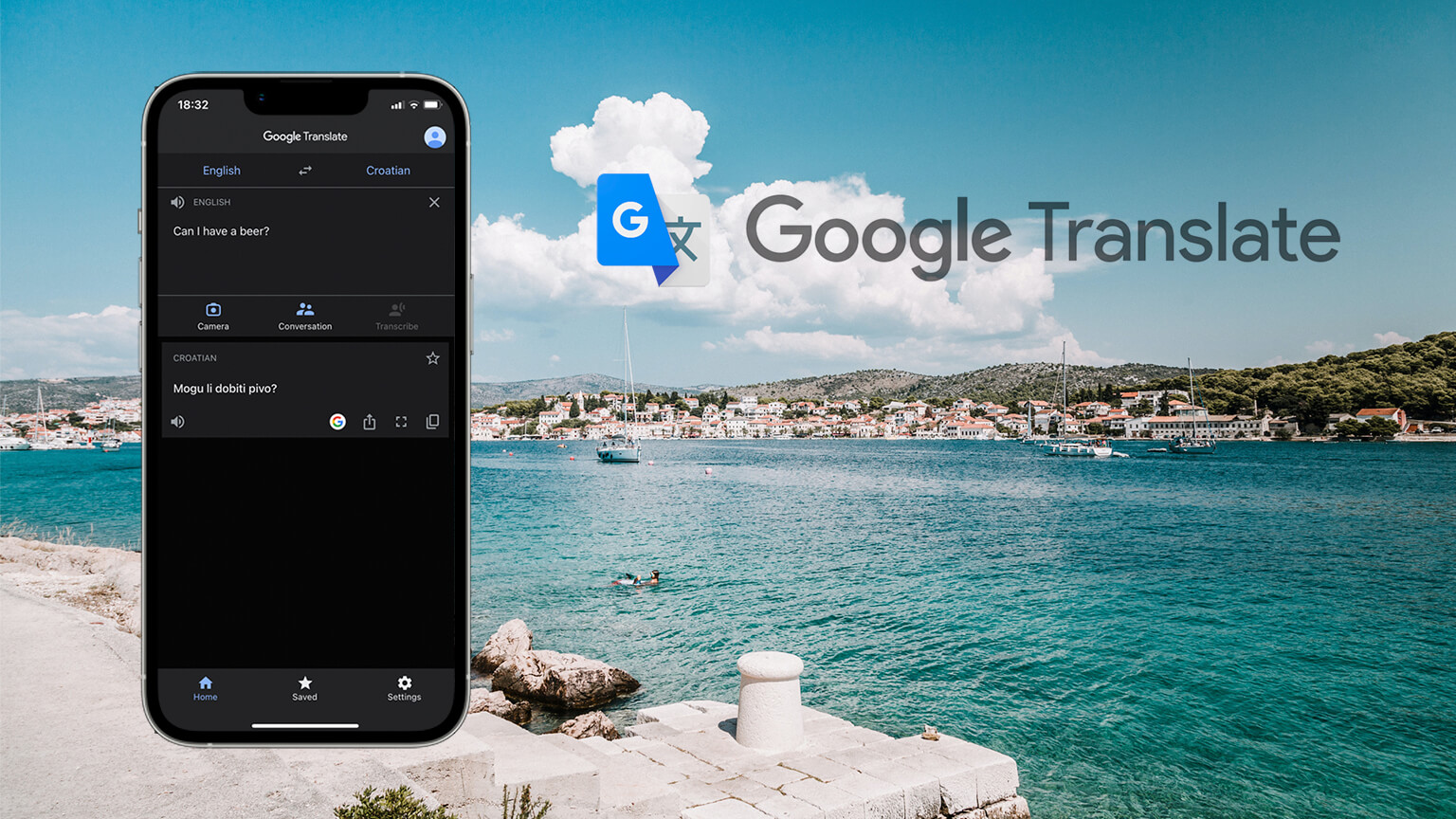
For this reason, Google Translate is the application that we recommend you to have. Personally, we recommend using their English to Croatian translator, which has more translations and fewer errors. There are other translation apps, but unfortunately, they do not have a Croatian translator or they are not well programmed for that function.
Available at Apple App Store and Google Play.
Currency
As you well know, the official currency in Croatia is the Kuna. Although it is very likely that you booked your accommodation and your tickets in euros, dollars, or pounds, once you land in Croatia you will need to know the currency exchange. It is true that you can use your credit or debit card to pay for everything here, but besides being a very good idea to be aware of the exchange rate, it is good to note that some places (such as bars, cafes, tours or activities) charge cash only.
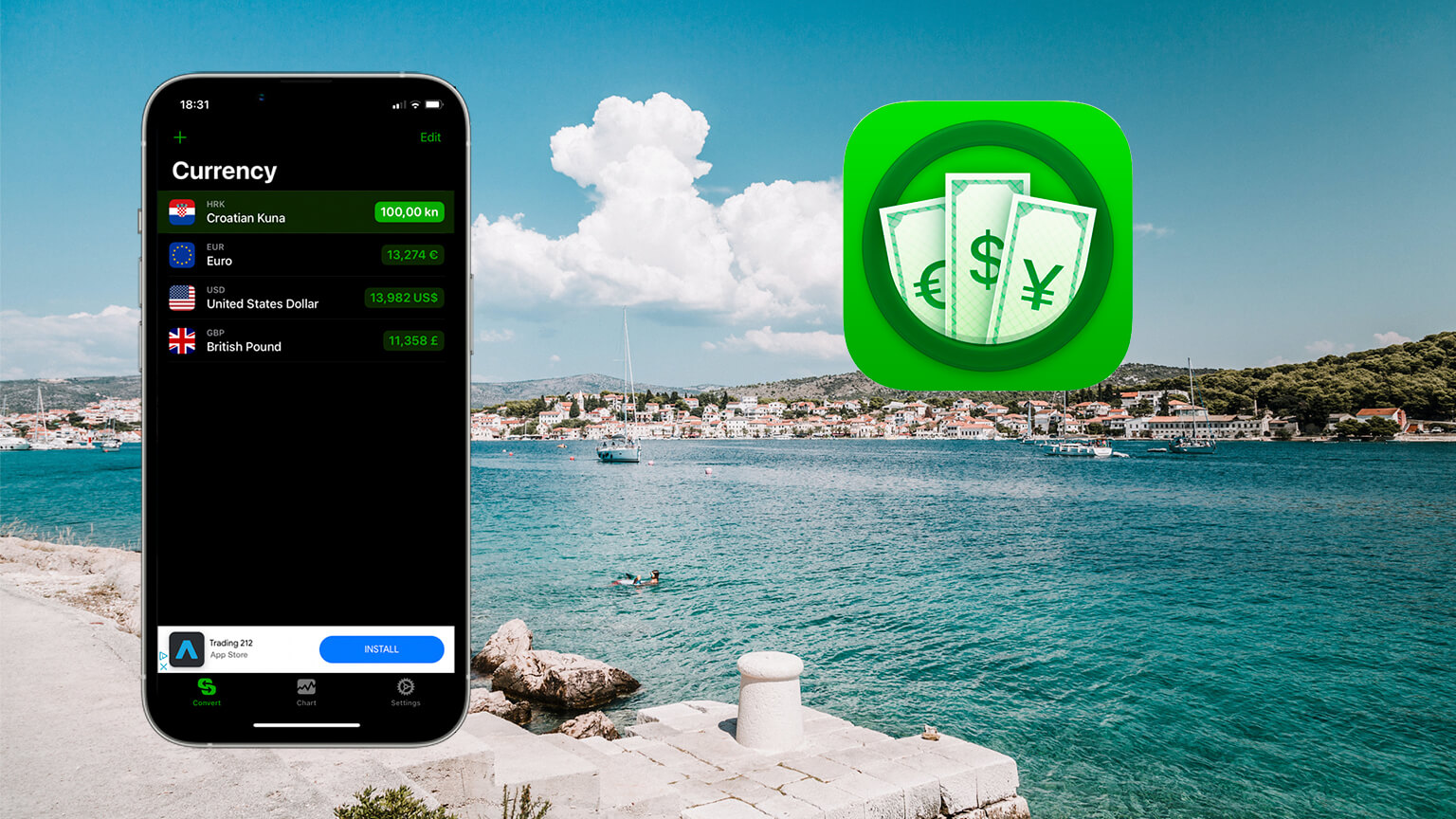
For this reason, before going to the nearest ATM to withdraw money or to an exchange house to change it, we recommend you use the Currency application, where you can see the value of the kuna versus absolutely all the existing currencies in the world. This will be a year of many changes in prices because from January 2023 Croatia will begin its transition process to the Eurozone. Therefore, we could not recommend you more to have this application at hand.
Available at Apple App Store and Google Play.
Google Maps
Another app that you should already have installed on your mobile device. Apple Maps is also an option, but from experience, I think Google Maps today is better designed to be used in a country like Croatia. Even the vast majority of satellite images from Google have been recently updated in the country, so it will be a great tool to guide you safely when traveling around Croatia.
In some cities, like Zagreb, the database of the public transport system is synchronized with this application, so it is possible to know exactly which bus or tram should take you to the place you need in real-time. In other cities, like Split, it is even possible to see the ferry routes in 360 views.
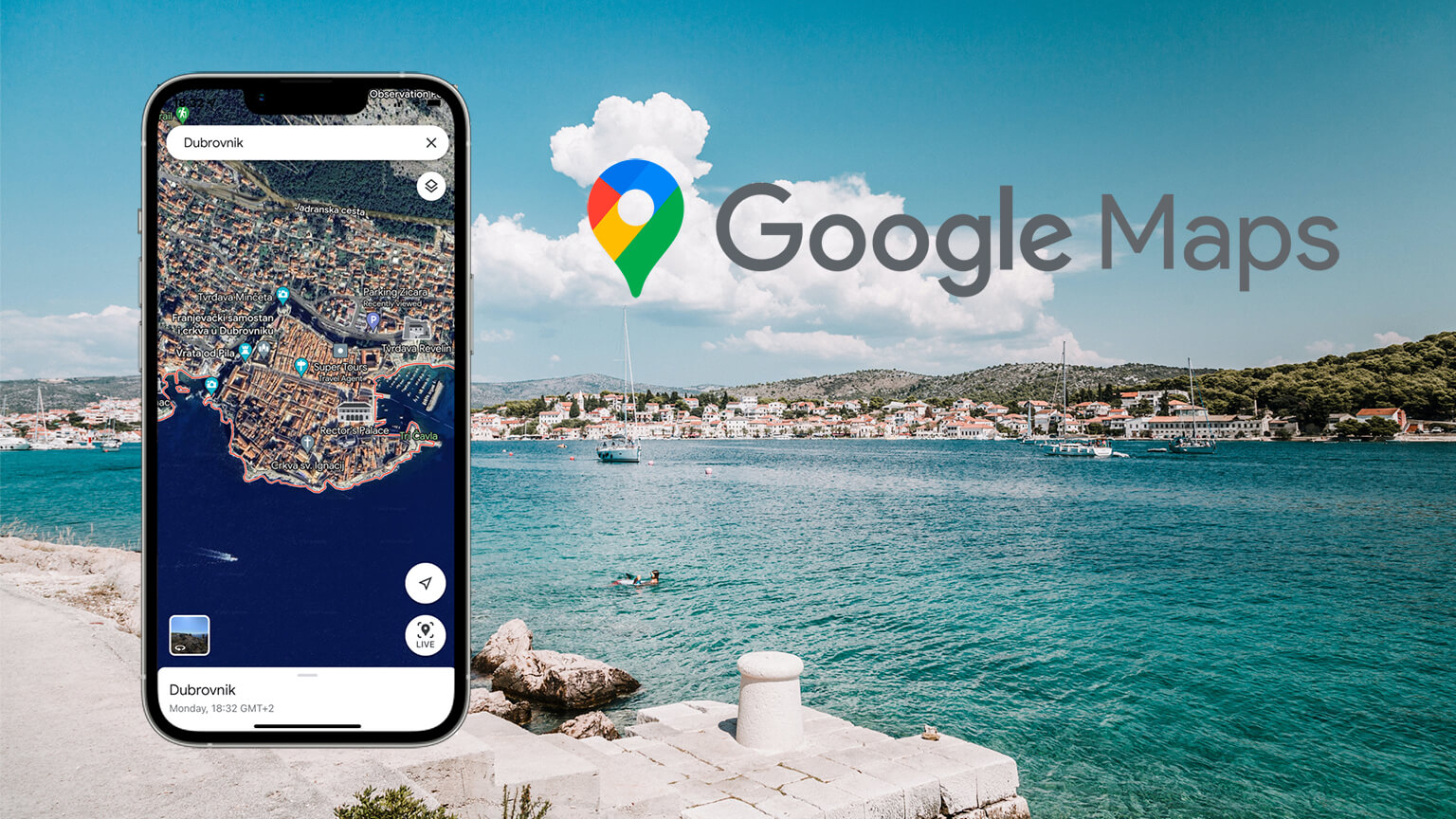
Google Maps will definitely be your ideal tool not only to find your accommodation, a good restaurant to eat at, or a secret beach to relax but also to build your itinerary if you plan to travel to several cities in Croatia, evaluate which is the best breakfast option based on its review system, or also to take alternative routes in case you come across a closed street or traffic.
Available at Apple App Store and Google Play.
Booking.com
No, we do not have a partnership with Booking.com, and we definitely know that there are numerous alternatives such as Hotels.com, Airbnb, Hostelworld, or Expedia. However, if there is one thing you need to know about accommodation in Croatia, it is that there is more than one type of accommodation. Actually, more than three. Honestly, more than ten. It's hard to count.
Hotels, villas, houses, apartments, rooms, bungalows, camping sites, eco-lodges, hostels... even boats! The offer of accommodation in Croatia is incredibly diverse, and this invites you to be open-minded and correctly evaluate which one will be able to effectively satisfy your dream vacation. Therefore, you need an accommodation search site that brings together all this diversity, and you can find it on Booking.com.
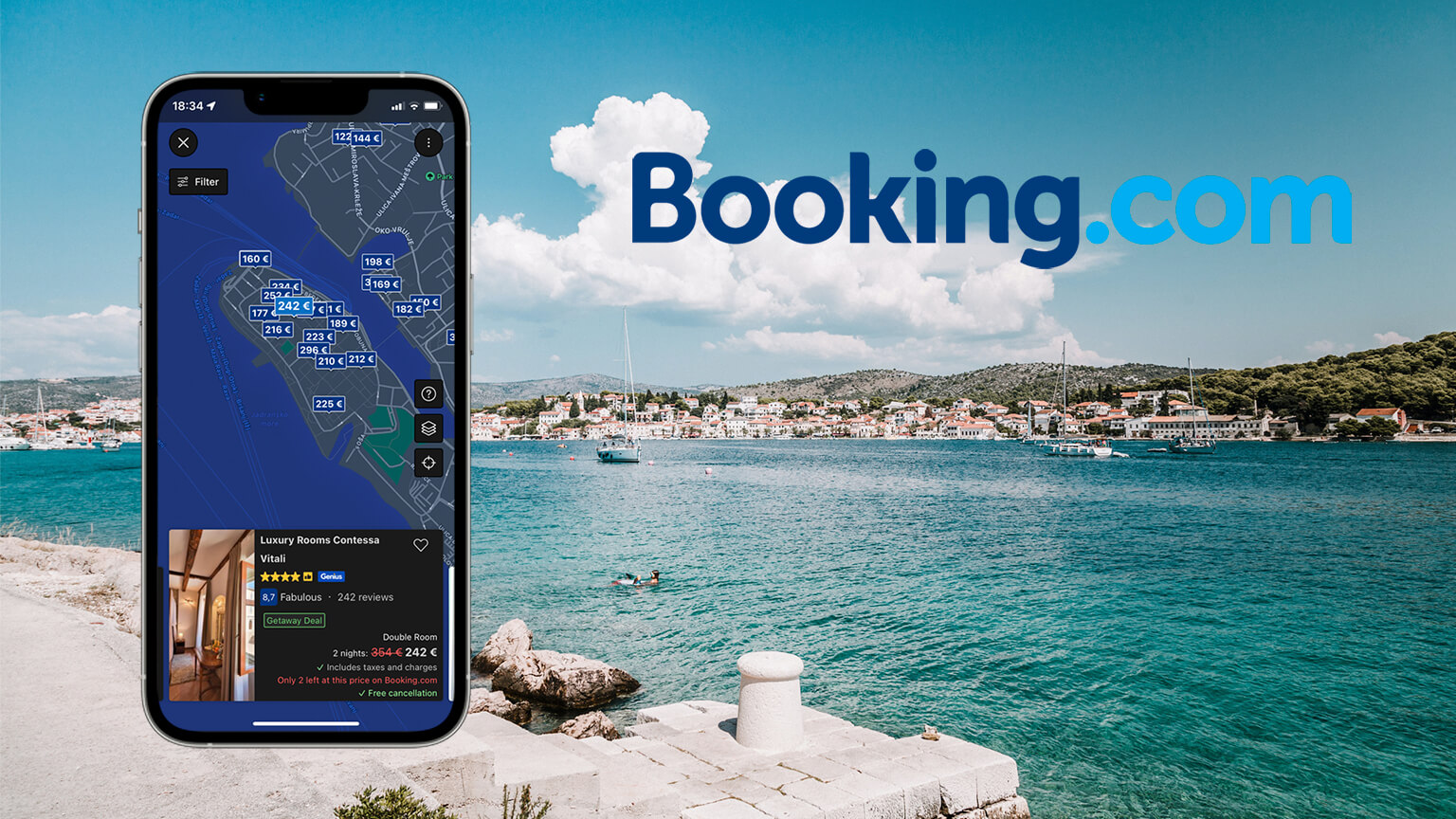
We do not want to recommend an app based on bad experiences, but the truth is that during the high season in Croatia there are many cases of scams to tourists looking for accommodation. Many of them book accommodations that cancel reservations or raise their prices at the last minute, or even didn't exist in the first place! Therefore, having an application like Booking.com is a good idea if you want to see alternatives with ratings and reviews that give you more security before booking your accommodation, as well as being in contact with a customer service that avoids this type of awkward situations.
Available at Apple App Store and Google Play.
FlixBus
During summer at its height, transportation alternatives for traveling around Croatia are not in short supply. Trains, planes, ferries, catamarans... you name it. However, the leading transport system in Croatia continues to be buses. Everyone, both locals and tourists, can basically get to any corner of the country, and from anywhere in Europe, by bus.
The German company FlixBus is the best option if you plan to reduce travel costs and choose the bus as your transportation alternative if you travel from another country to Croatia. Its modern fleet will bring you to and from Croatia with the comfort that a well-deserved vacation deserves.

Available at Apple App Store and Google Play.
Arriva Croatia
This time, we will add another bus application. Believe it or not, FlixBus is not necessarily the favorite in the country. Although you will see their green buses at all stations and roads in the country, it cannot be said that the margin of preference is as distant as that of Arriva Croatia, and for a special reason. FlixBus, while connecting to almost every city in Croatia, may not reach everywhere. Something that you will find in Arriva Croatia, which not only offers you tickets to big cities like Zagreb, Split, Rijeka, Osijek, Zadar, Dubrovnik, Pula or Šibenik, but also to more remote and smaller towns and villages throughout the country (and even the islands and National Parks!).
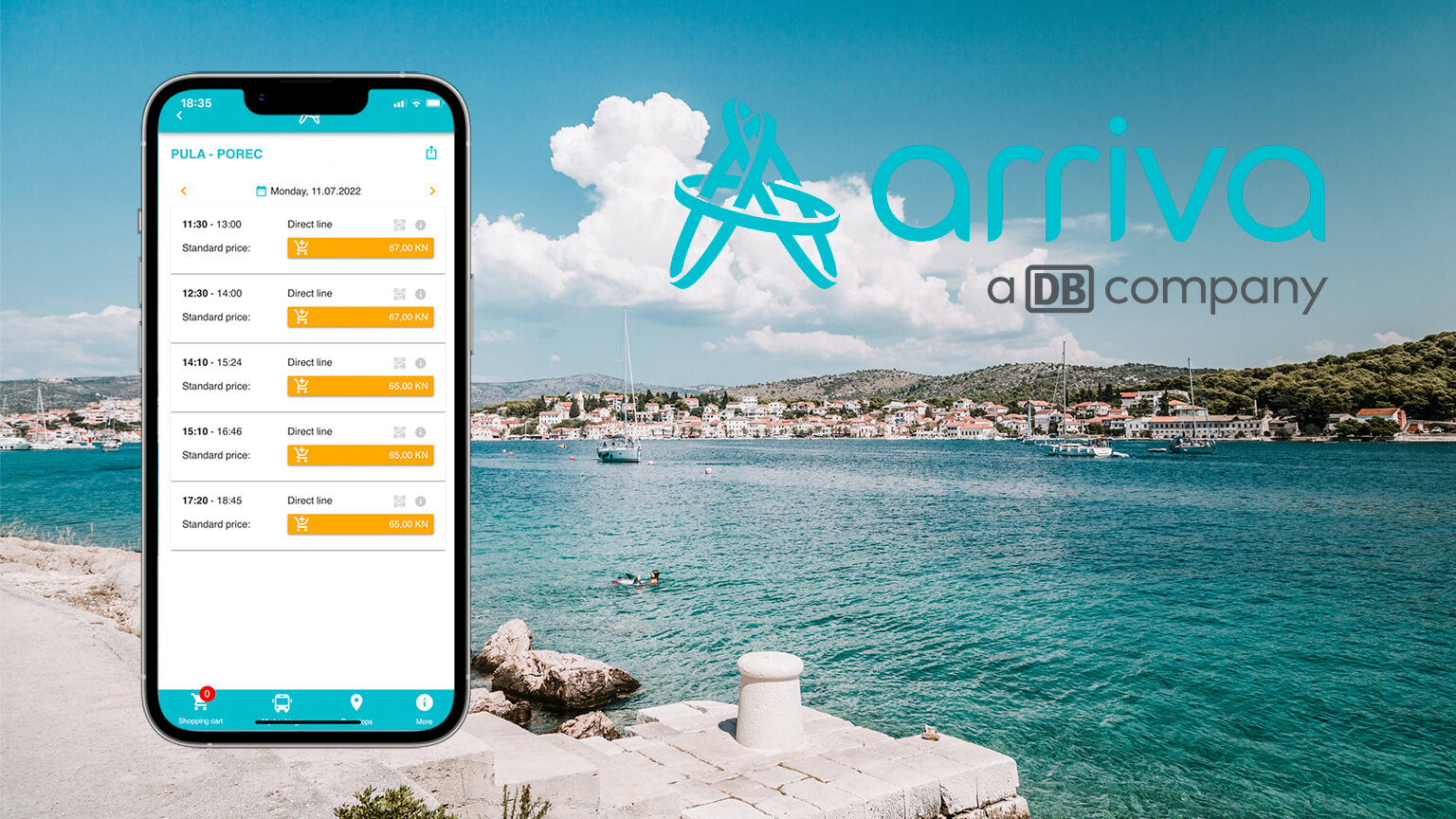
Likewise, Arriva Croatia has a huge fleet of buses and, therefore, a large number of schedules and competitive prices that will motivate you to compare your options between both companies. At the end of the day, it doesn't hurt to organize a trip around Croatia using buses from both Arriva Croatia and FlixBus. Both have mobile applications that allow you to check their schedules, reserve seats, and download your tickets to your phone.
Available at Apple App Store and Google Play.
BlaBlaCar
Here we present a somewhat different transport application. It is the app that almost everyone has recommended to me in Croatia, and very recently I used it for the first time to travel from Zagreb to Rijeka.
BlaBlaCar is a French application that allows you to choose a city or town of departure and destination, and it will give you a list of drivers who will also travel that route on the day you choose to travel. The drivers are the ones who offer their departure and arrival times, as well as the exact departure and arrival points in the respective cities. The choice is yours. You'll be able to see who else will be traveling with you, as well as ratings and reviews from past passengers.
BlaBlaCar is a great alternative if you travel light from one city to another, want to get there faster, and to make it more interesting, to meet people during the trip through good conversations.
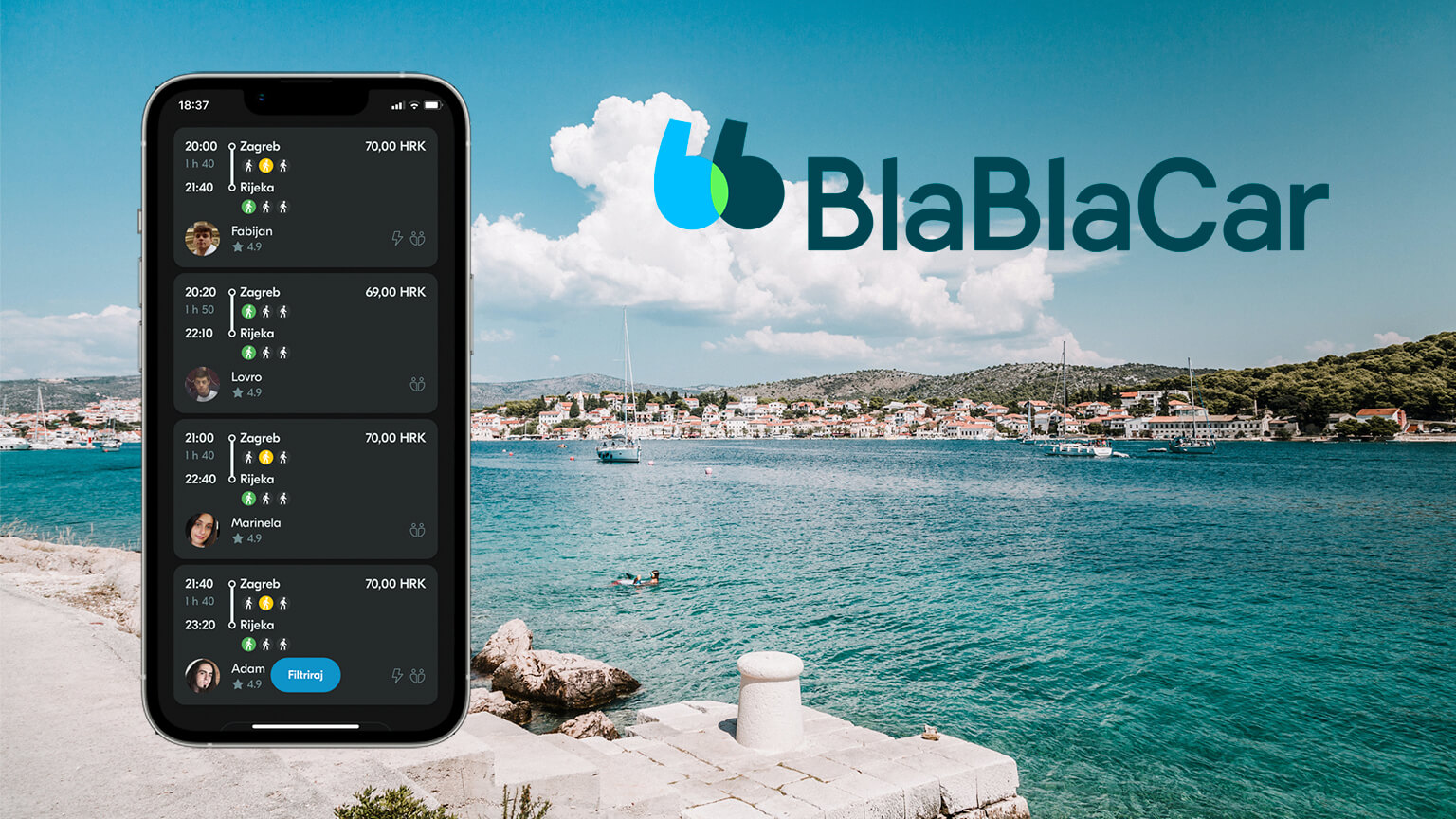
Once the driver has been chosen, you will receive a confirmation from him and you will be able to obtain his contact information to coordinate the meeting at the starting point. We recommend that you confirm your trip in advance, and also bring cash as it is generally the preferred form of payment for drivers.
Available at Apple App Store and Google Play.
Jadrolinija
What's a Croatia vacation without an island getaway? Of course, the Croatian Adriatic coast is long enough to find a beach that suits your needs, but there is a special feeling of getting on a ferry and exploring one of the more than 1000 Croatian islands. If that is your wish, then make sure you have the Jadrolinija app installed.
Jadrolinija is the national ferry company in Croatia, and while their website or port offices have long been the most common places to buy your tickets, their mobile app is also a great option as you never know when you may be tempted to change your plans and hop on a ferry.
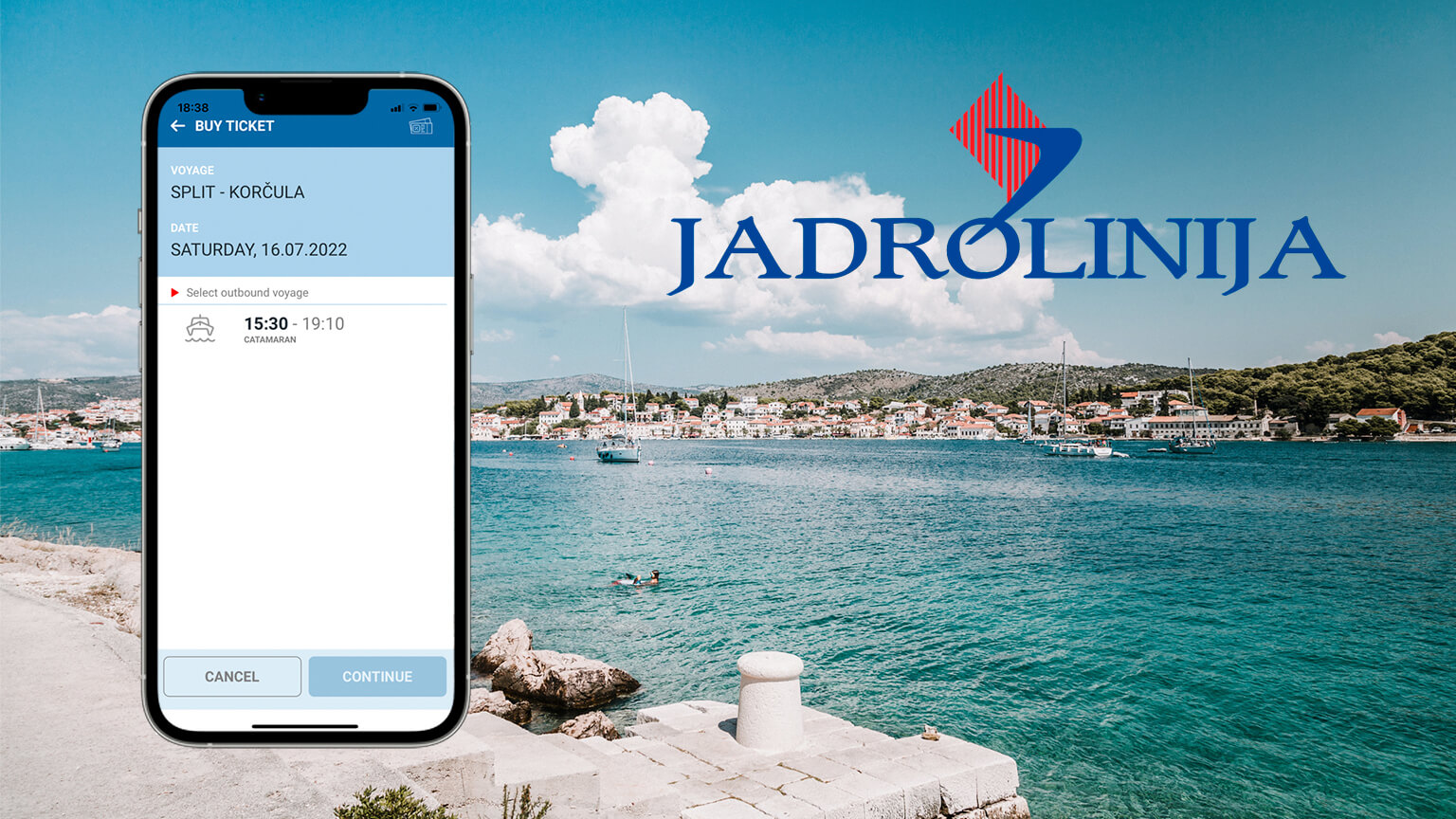
In their app, just choose your departure ferry port and you'll be able to see the destinations you can go to. This will allow you to see your table of times and prices according to the number of passengers. You can also find information about the location of the ferry ports in Croatia. The app allows you to pay by debit card.
Available at Apple App Store and Google Play.
Tripadvisor
Although Google Maps has a huge database of reviews and ratings to help you make a decision on where to go, stay or eat, Tripadvisor remains a benchmark among travel guide applications. Perhaps what positions Tripadvisor as a leader in the category is that you only have to enter a destination to which you plan to go to obtain a wide range of possibilities on what to do and see during your trip.
It is an application widely used by companies of all kinds in Croatia, and that is why you will not find it difficult to find tours, activities, or workshops that allow you to have a different vacation. Precisely, you will be able to use the ratings and reviews to validate the quality and reliability of these activities, and not take any risks.
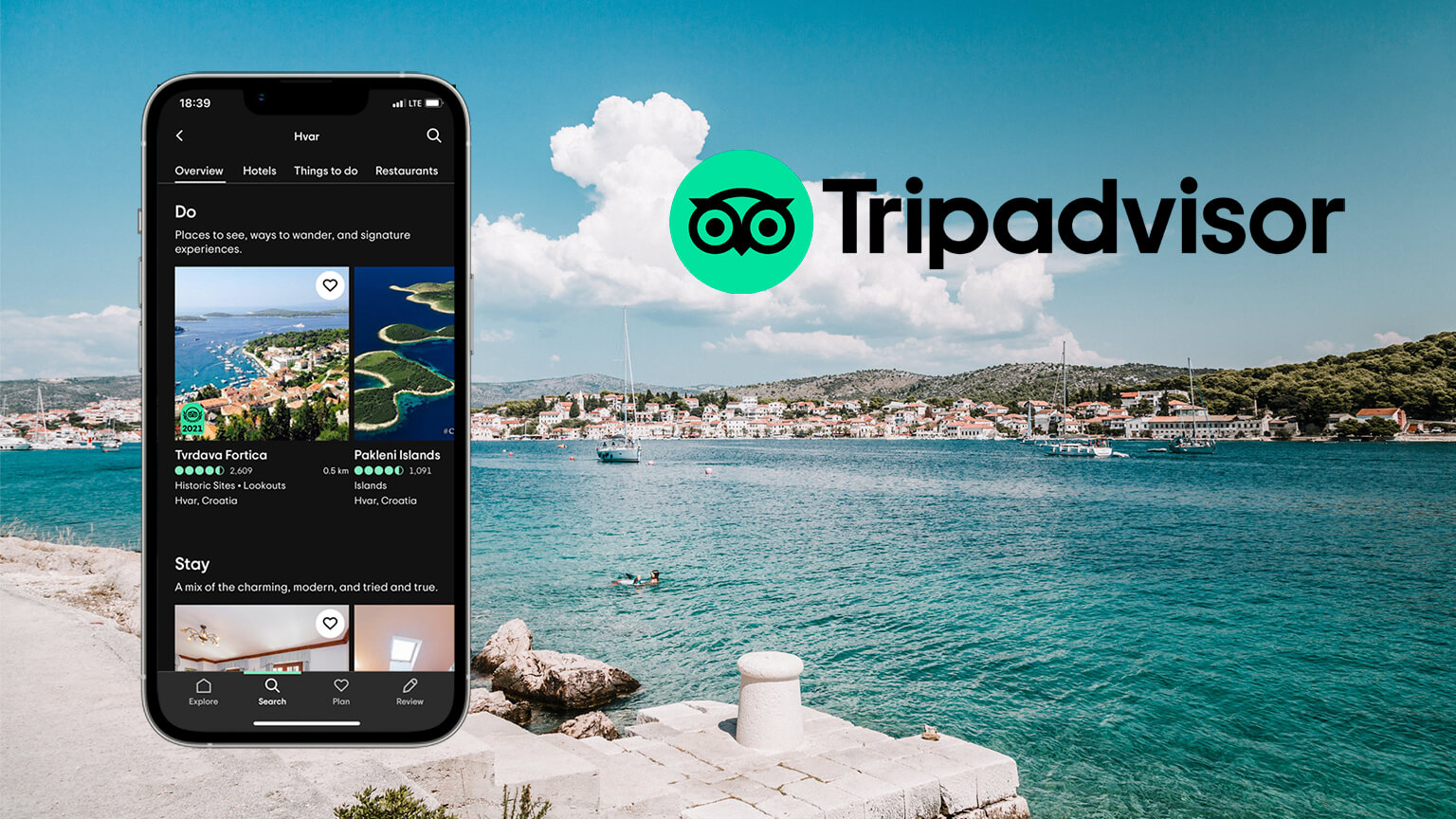
There are all types of tourists, and among them, there are those who do not usually arrive with pre-made itineraries, since for them spontaneity and improvisation add some emotion and a feeling of adventure to their vacations. Therefore, Tripadvisor is a great tool to get inspired and make a list of places to see and things to do in your destination in Croatia.
Available at Apple App Store and Google Play.
Uber
It may not have the best public transport in Europe, but Croatia is a country where you can get around without any problems. If time is not an issue for you and you enjoy urban and rural landscapes while onboard a bus or tram, then there is no reason to despair.
However, it is true that from time to time you will have to rush to the airport, the train station, the bus station, or the ferry port or you will lose your trip. Similarly, you never know when you may need to go to a hospital (when it's not an emergency) or maybe you've booked a tour where you have to meet the agency at a certain place and time. In these and many other cases, the virtue of patience is probably not enough and nerves do not allow you to wait for a bus or tram, which sometimes you do not know when they may arrive.
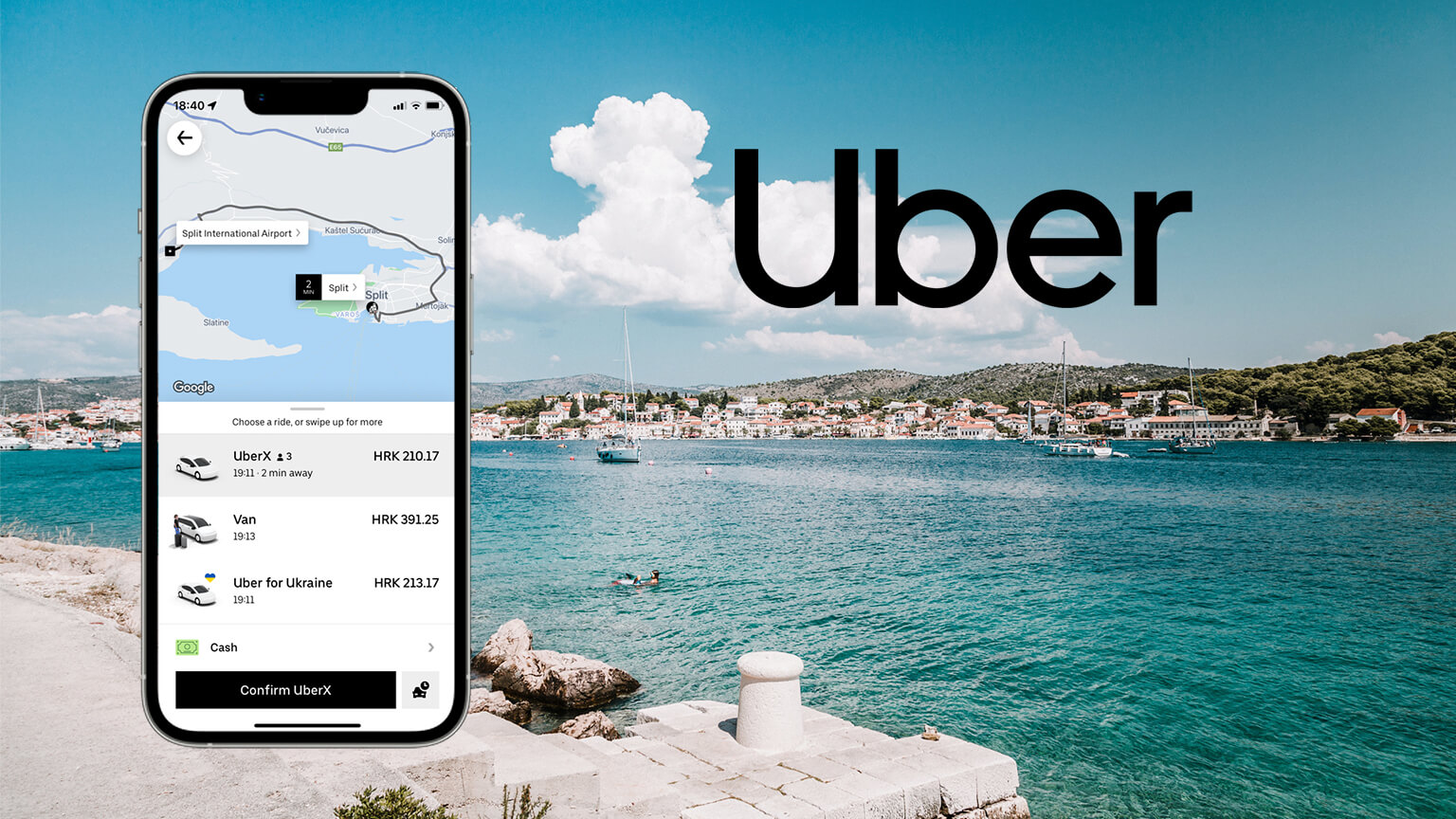
In that sense, it might be a bit obvious that having a taxi app installed is always a good idea. Yes, there are taxis that can take you from the airport to the city and vice versa but don't trust their rates. It is better to grab the WiFi and book the taxi from an app. While many in Croatia will recommend apps like Cammeo or Bolt, I have personally found Uber to be quite reliable and effective, with reasonable and fair rates.
Available at Apple App Store and Google Play.
Today's smartphones contain enough storage to install dozens of apps, so you shouldn't feel limited to just these ten. The idea is to travel calmly and happily, so the more apps you find that can help you organize your vacation, the better! Find apps that help you learn about private boat rentals, weather apps, airline apps, apps with biking or hiking trails, and more. Everything helps!
For more on travel in Croatia, follow TCN's dedicated page.
Croatian Visa Free USA Travel Might Boost Trade, But Issues Remain
October the 2nd, 2021 - Croatian visa free USA travel has finally been announced after years and years of waiting. As of December the 1st this year, Croatian passport holders will no longer require visas to enter the USA, and this is more than likely to further boost trade between the two countries. That said, issues of course remain.
As Tomislav Pili/Poslovni Dnevnik writes, Croatian visa free USA travel, which, according to the US Administration, will begin in December, will improve Croatia's economic co-operation with the world's largest economy, but the main obstacle - double taxation - remains an enormous issue, as the USA is one of the few countries with which Croatia has a trade surplus.
Export growth by 13 percent
As Andrea Grubisic, a senior expert associate of the International Affairs Department of the Croatian Chamber of Commerce (HGK), explained, last year, the export of goods from Croatia to the USA amounted to a massive 521.6 million dollars, almost 13 percent more than back in pre-pandemic 2019.
Although imports from the US also increased by 5.3 percent, a surplus of 323 million US dollars was realised, which is 18.2 percent more than in the previous year. "The trend continued in the first six months of this year, so Croatian exports to the USA increased by 93.6 percent, and the surplus on the Croatian side increased by almost 53 percent," explained Grubisic. Nevertheless, the world's largest economy isn't really a particularly important trading partner for Croatia.
In the total trade of Croatia with the rest of the world, the USA ranks a mere 15th with a 1.67 percent share. In terms of exports, the United States ranks 8th with 3.06 percent, and in terms of imports, only 23rd with 0.77 percent.
When asked about the level of interest from Croatian companies in doing business "across the pond", Grubisic said that according to the Croatian Chamber of Commerce and contacts with members that are just opening over on the US market, there is interest in exporting consumer goods, including food.
"Certainly, in the last few years, the ICT sector has stood out, from which Croatian companies are increasingly showing interest in opening their subsidiaries or companies in the United States, and according to revenues from exports of services to the United States, this sector looks promising," said Grubisic.
Darinko Bago, President of Croatian Exporters, believes that the facilitation of Croatian visa free USA travel will greatly facilitate the ongoing work on this matter, and that it will also result in the conclusion of new business moves.
“This is especially true for industries that produce higher value-added goods because it eliminates administrative visa application procedures, especially if you need those documents for a larger number of employees. If we look at the experiences of other countries that have a visa free travel regime with the United States, it will undoubtedly raise economic cooperation between Croatia and the USA,'' said Bago.
''However, a much bigger obstacle to trade growth is the lack of a double taxation agreement, which is necessary if we're to achieve a higher form of co-operation with the US,'' Bago added.
Two important reasons...
"Such an agreement would be especially important for Croatia for two reasons: given that America is a technological power, it would provide easier access to technology as part of the digital transformation, and the other is that the United States is also a financial centre.
Croatia is currently ''invisible'' to American investors because they'd have to pay taxes twice on the realised profit from any of their investments, in Croatia and in the USA. That is the main reason why we have a trade surplus with the USA, because American companies are planning for the long term, and at the moment it just isn't worthwhile for them to open a branch in Croatia,'' Bago pointed out.
''It should be clarified that the announced abolition refers to B1/B2 visas that enable Croatian citizens to go to the US for travel and business,'' said Andrea Doko Jelusic, the executive director of the American Chamber of Commerce (AmCham) in Croatia.
"They're a separate category of business visas that every country, including the United States, has for occasional or longer work carried out on their territory," added Doko Jelusic.
She advised Croatian companies to focus on a specific geographical area, specific sectors, and even the size of the company they're targeting. “It's easier to do business with small and medium-sized enterprises than it is to focus on large corporations,'' concluded Doko Jelusic.
For more, check out our dedicated travel and business sections.
Mala Butiga is Dubrovnik’s New Wine and Food Hotspot
27 August 2021 - Mala Butiga is a brand new shop located in the centre of Dubrovnik's historical district. It is the city's newest and one of the most interesting additions when it comes to wine and food offers.
Across the square from the Great Onofrio's Fountain, Mala Butiga offers an amazing selection of Croatian wine and premium food items. It is a family business and a passion project started out of love for all things local and authentic. It is run by locals with plenty of tourism and hospitality experience that includes running a wine bar and making wines. Mala Butiga aims to be a one-stop shop for foodies and wine enthusiasts alike.
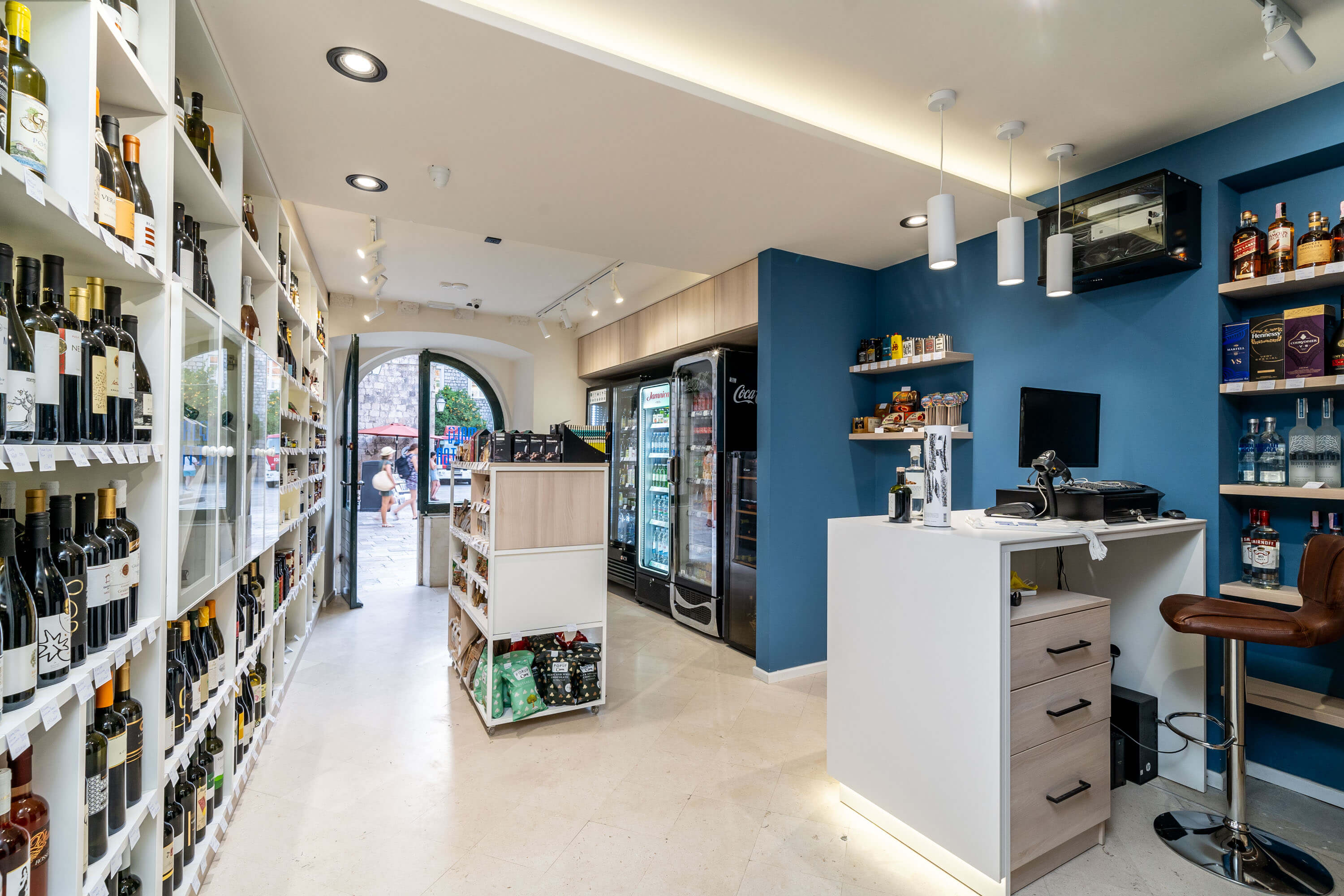
Dubrovnik's historical centre might be brimming with people and activity, but it is hardly a shopper's paradise. There are plenty of options when it comes to stores catering to travellers, but not many offer great quality for a reasonable price. When it comes to local wine and food, the quality of which is one of the major draws for people visiting the area, the situation is not much better. Thankfully, Mala Butiga is here to save the day.
Croatian Wine and Spirits
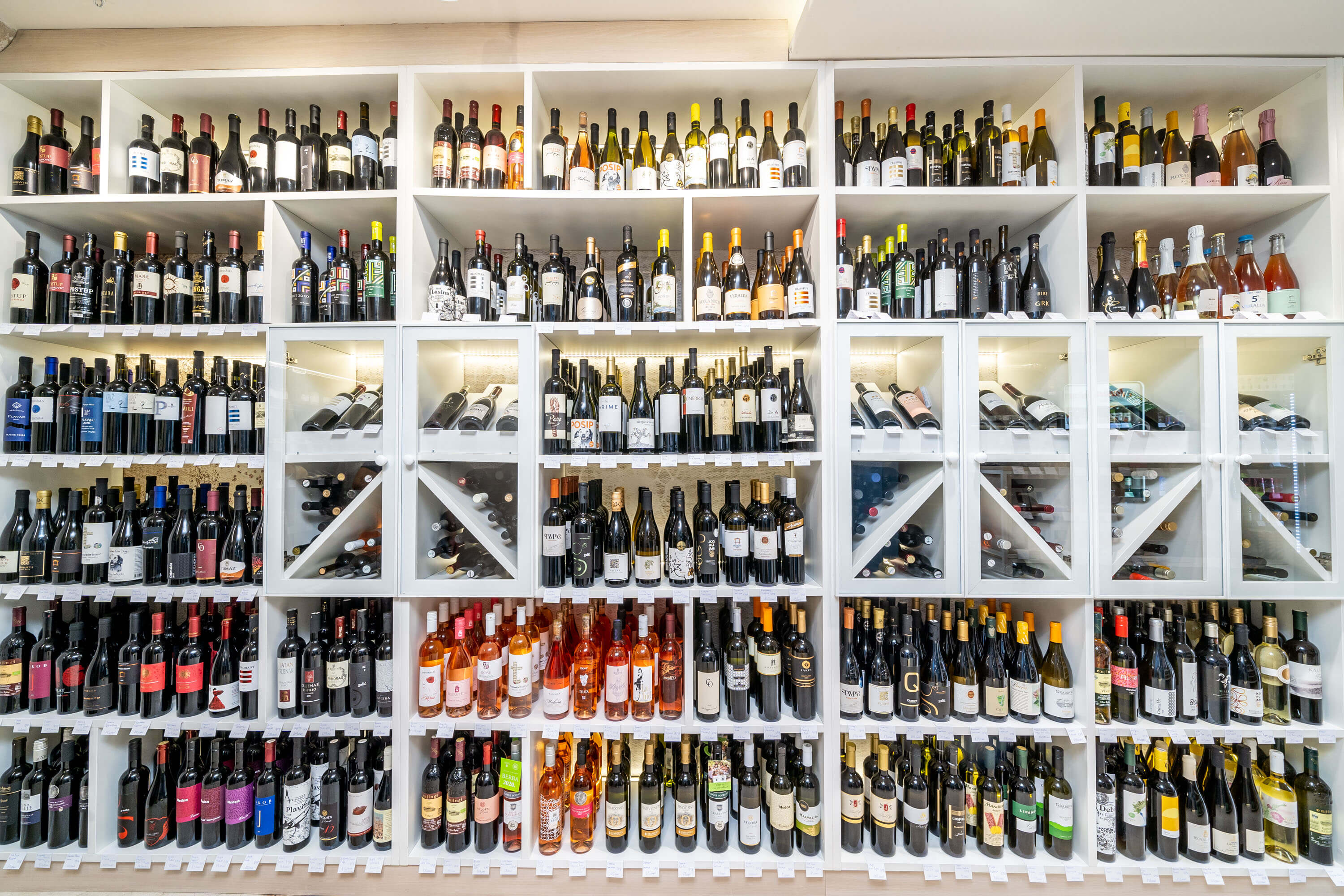
It is a very easy shop to find when entering the historical centre. As you walk through the inner Pile gate, it sits directly behind the prominent fountain to your right. Inside you will find arguably the best selection of wine in all of the Dubrovnik area. Wines sourced directly from local family wineries fall into a wide range of prices and styles. Some of the best Croatian bottles are on display. In a country where almost all the wine is produced on small scale, it took a long time to create this impressive collection. Knowledgeable staff is on hand to help you find that perfect bottle to take home as a memento of Croatia or to enjoy while on holiday with friends or that special someone. Wines from all four major regions of the country are on display, everything from light sparkling wines to full-bodied reds. You can find other spirits at the shop as well with a smaller, but a great selection of craft beer and a lovely offer of Croatian liqueurs waiting for you.
Local Delicacies Not to Miss
When it comes to food items, the deliciousness within is hard to put into words. Truffle specialties from Istria, prosciutto from various Dalmatian regions, top Croatian olive oil, cheese, cured meats, and hot sauces… all this is just a quick visit away. Mala Butiga is stocked perfectly for those last-minute shopping runs before having to entertain a group of friends at home. It is also perfect for creating instant romantic dinners or stocking up for a nice picnic in the local area. Putting together a quick picnic basket was never easier, nor more delicious. In fact, that just might be the perfect choice for a day out while in Dubrovnik. The store holds some items impossible to find elsewhere in Dubrovnik, so its popularity is bound to rise not just with international travellers, but the locals as well.
Mala Butiga is on a fast track towards becoming one of Dubrovnik’s favourite stores. Make sure you pay it a visit before filling up that free space in your luggage for the return flight and we promise you will not be sorry.
For more on lifestyle in Croatia, follow TCN's dedicated page.
For more in-depth information on Dubrovnik, check out our Dubrovnik in a Page section of Total Croatia
Over Half a Million Tourists Currently in Croatia
4 July, 2021 - As Index.hr reports , Croatian Minister of Tourism, Nikolina Brnjac, published a tweet declaring over 500000 tourists currently in Croatia.
Istria and Kvarner regions, as well as Split-Dalmatia County and Zadar County are leading the list with the most guests at the moment. Considering the majority of them are coming from Slovenia, the Czech Republic, Germany, Poland and Austria, it is safe to assume most of these guests arrived by land. Airport destinations like Dubrovnik are still lagging behind in numbers, but with the recent start of Delta Air Lines and United Airlines direct flights to the city, this too is likely to change.
Dalmatian Destinations Rise
Makarska is doing well at the moment. With 6500 guests on record this popular seaside town is up a whopping 100% when compared to last year. This is still a far cry from 2019 though. This number only makes up about 50% of guests visiting Makarska in the same period two years ago.
Split is seeing the benefits of train connections to Central Europe. Since late May the city has seen direct trains to Prague, Bratislava, Vienna and most recently Budapest. Numbers at Split Airport are also rising. 160 airplanes are due to land in Split this weekend, 120 of them being commercial flights. At the same time, the Split Ferry Port is expected to receive over 40000 passengers and 11500 vehicles. Incoming tourism seems to definitely be picking up for Dalmatia's capital city.
As already mentioned, Dubrovnik is seeing two American airline companies connecting it directly to New York. Both companies started flying this week with airplanes full to capacity. This is a big step towards giving American tourists a chance to take over the position of Dubrovnik's most numerous guests from the traditionally strongest British market. Speaking of the British, they are the ones much of Croatian coast, especially Dubrovnik, are still waiting for. As of now, it is still unclear how, when and in what numbers will the British visit Croatia this year.
In the north, Rijeka region is seeing the return of Lufthansa flights as well as low-cost Eurowings flights. These will be a huge boost for the numbers from German market as the two companies now connect this part of Croatia to Frankfurt, Munich, Düsseldorf, Berlin and Hamburg.
For more on travel in Croatia, follow TCN's dedicated page.


